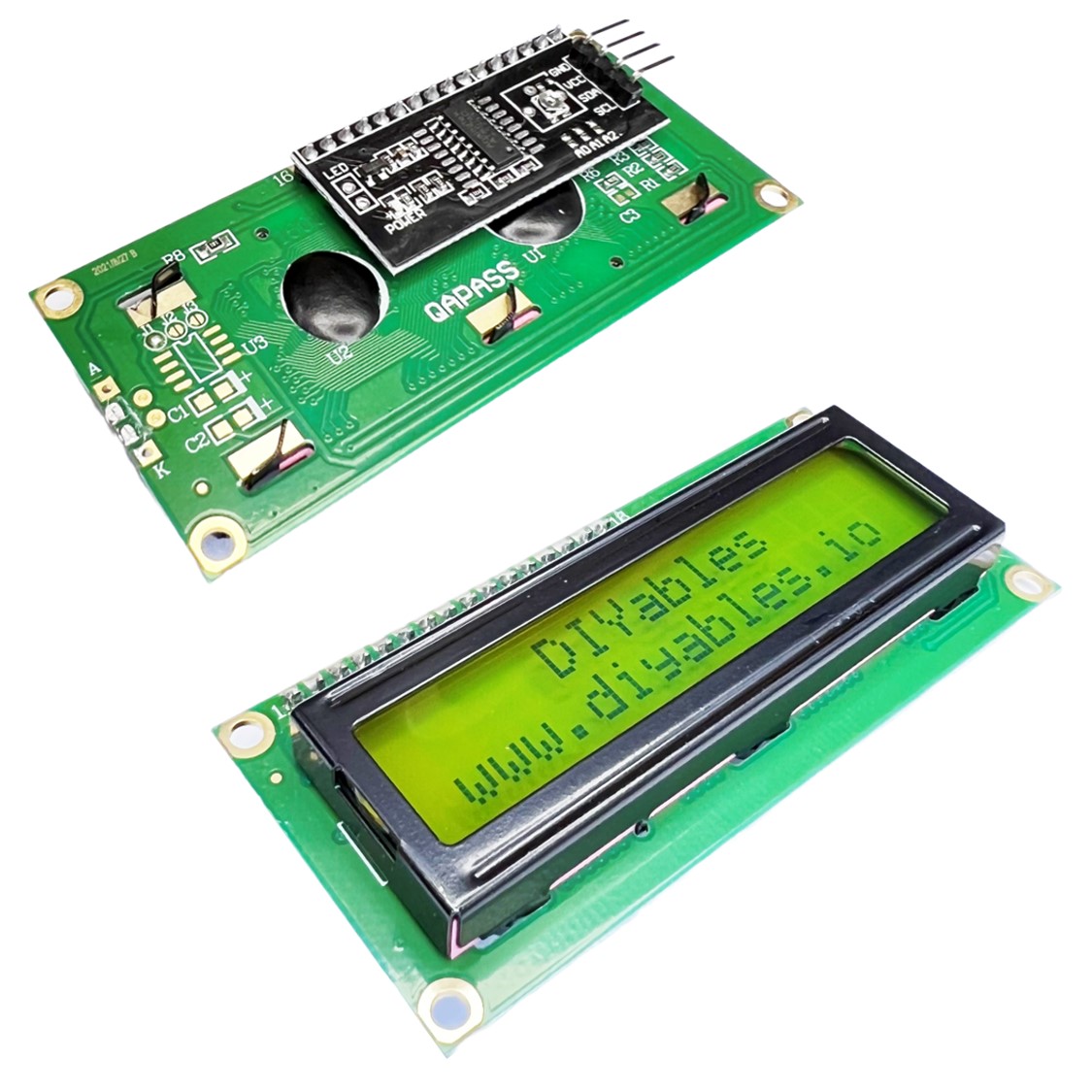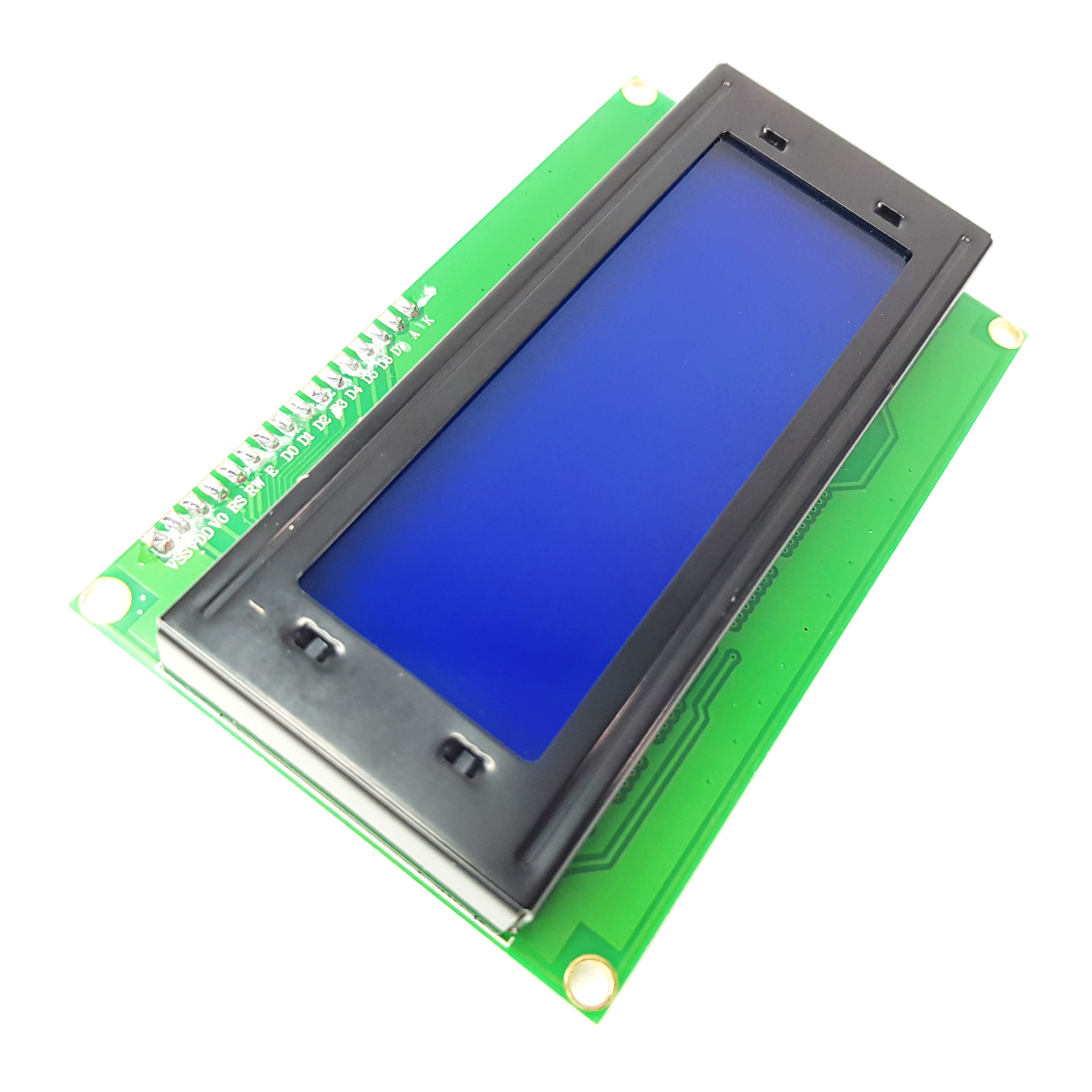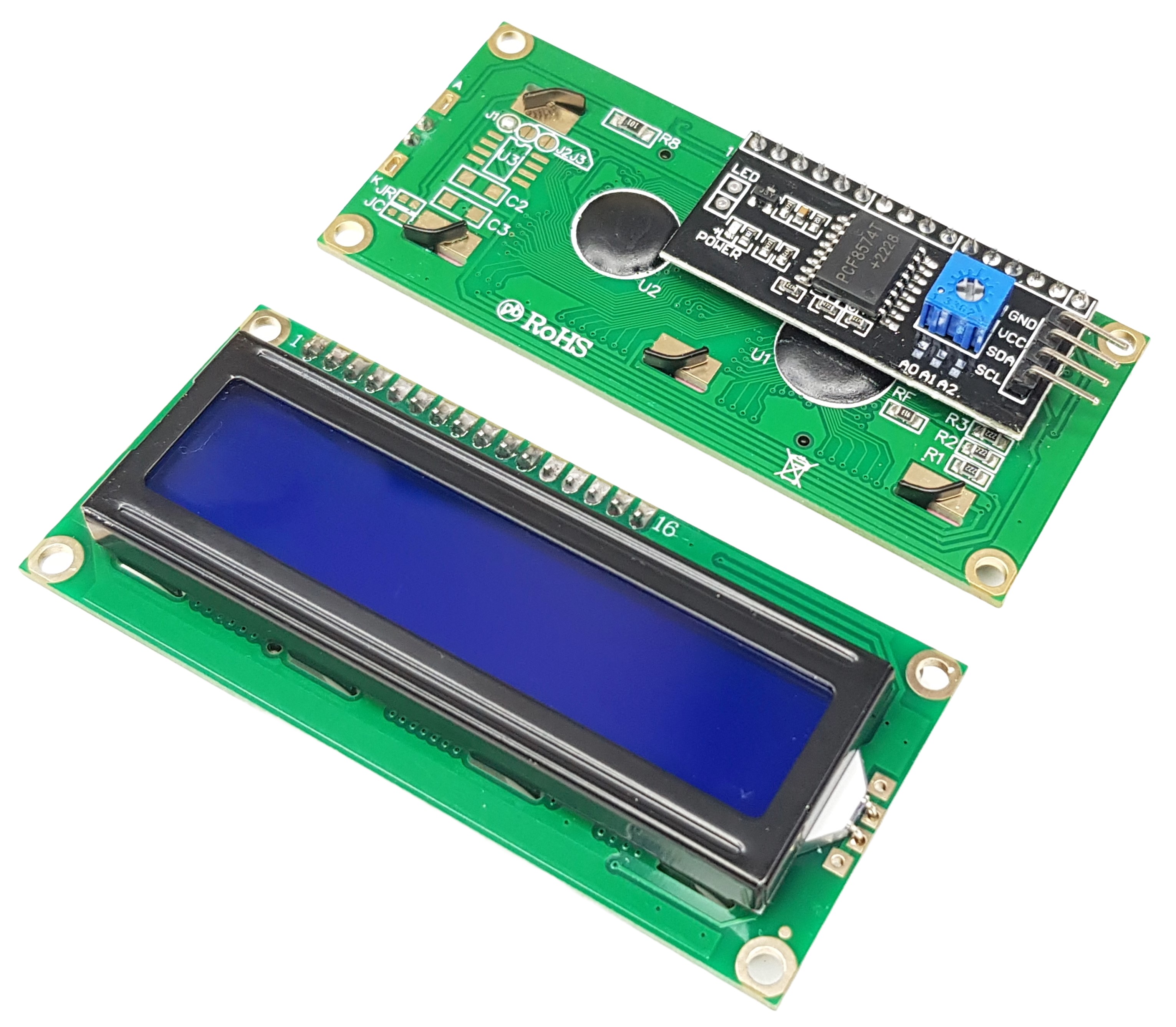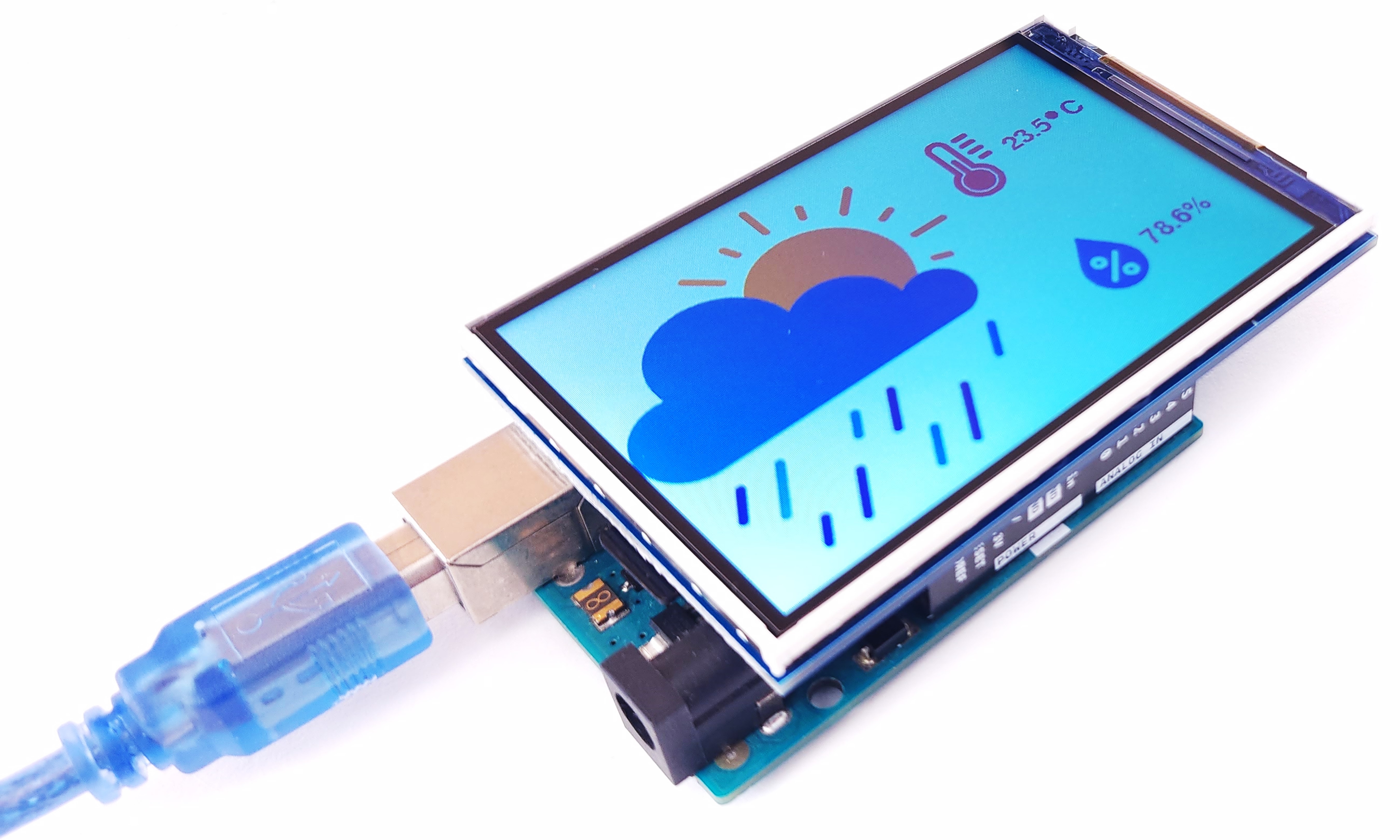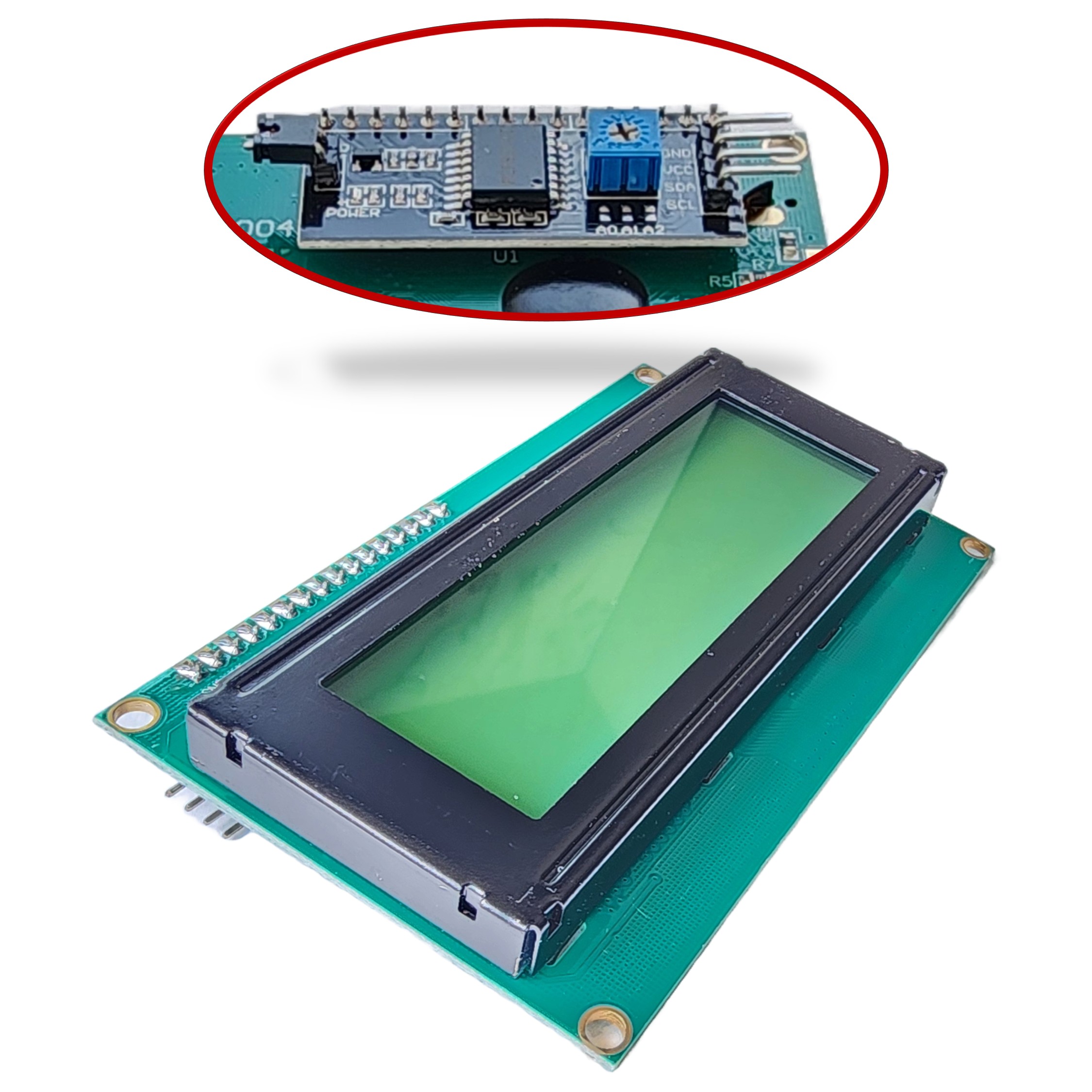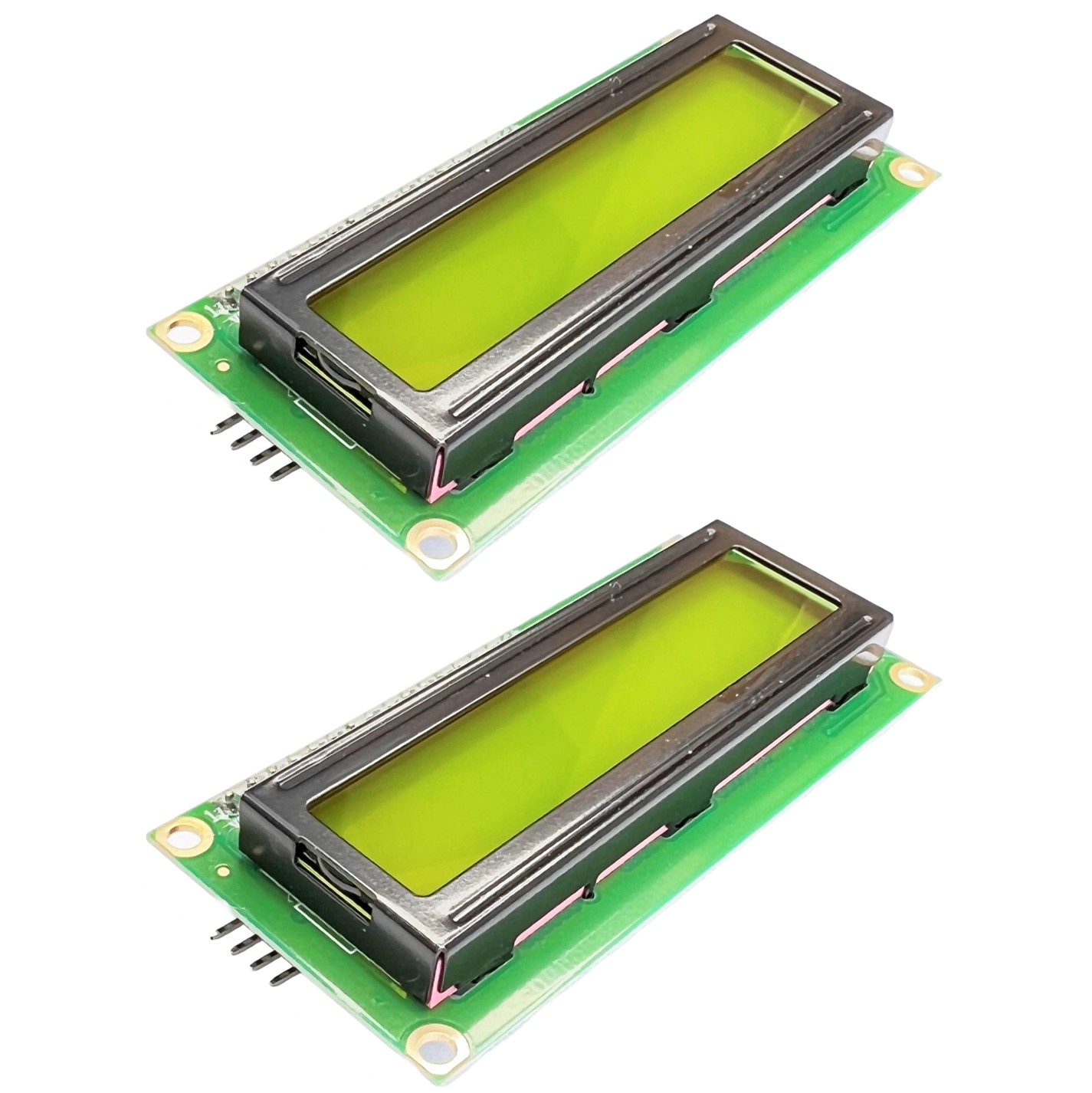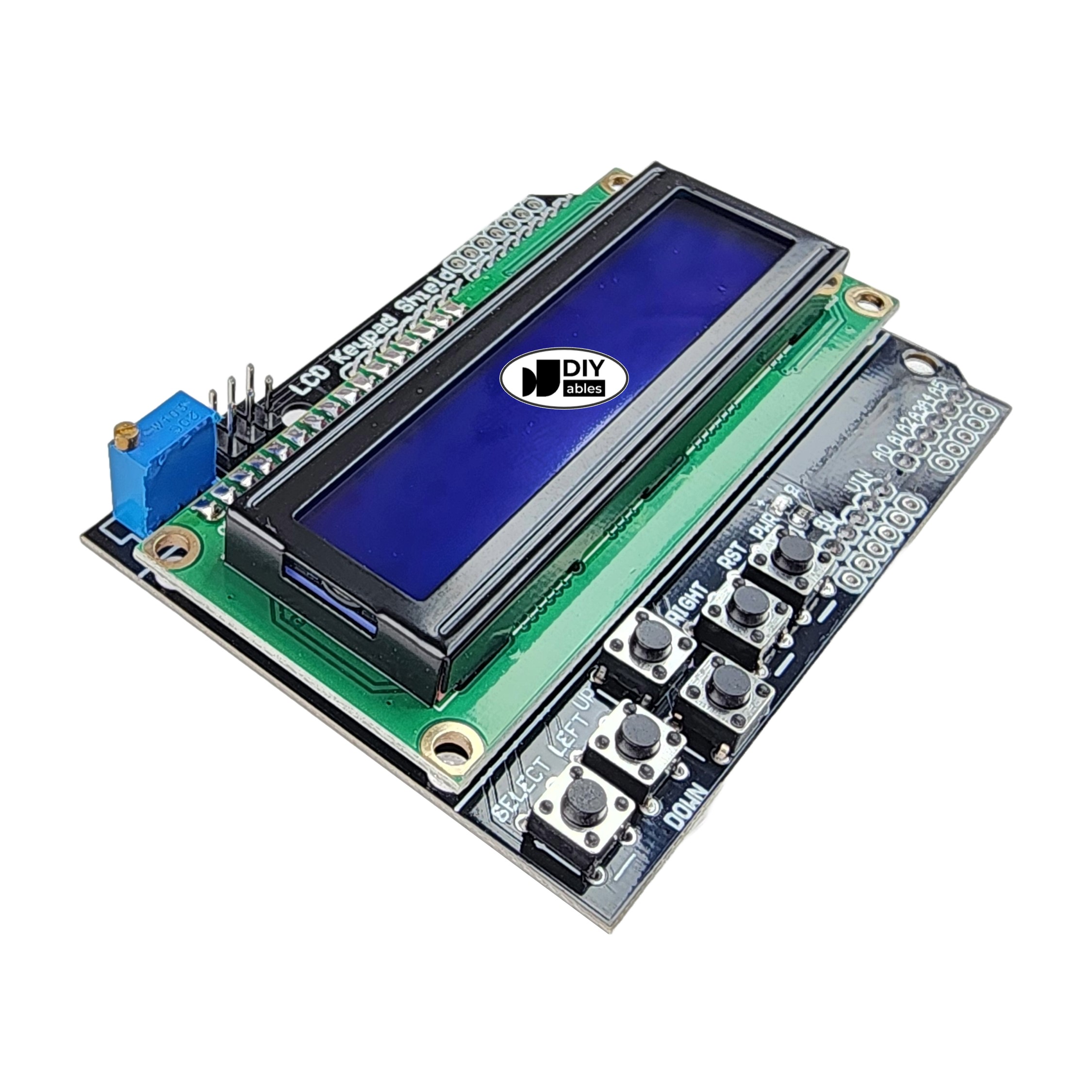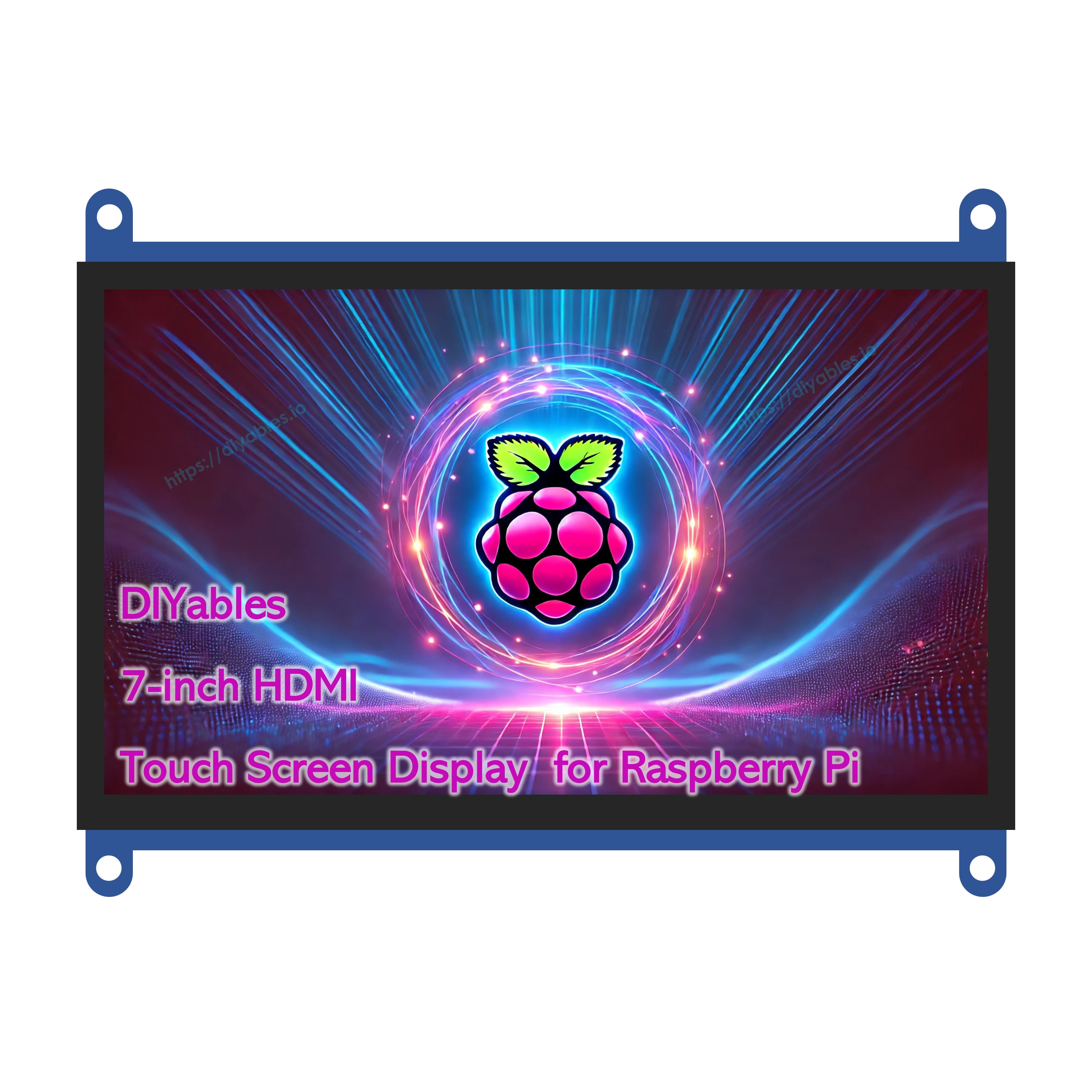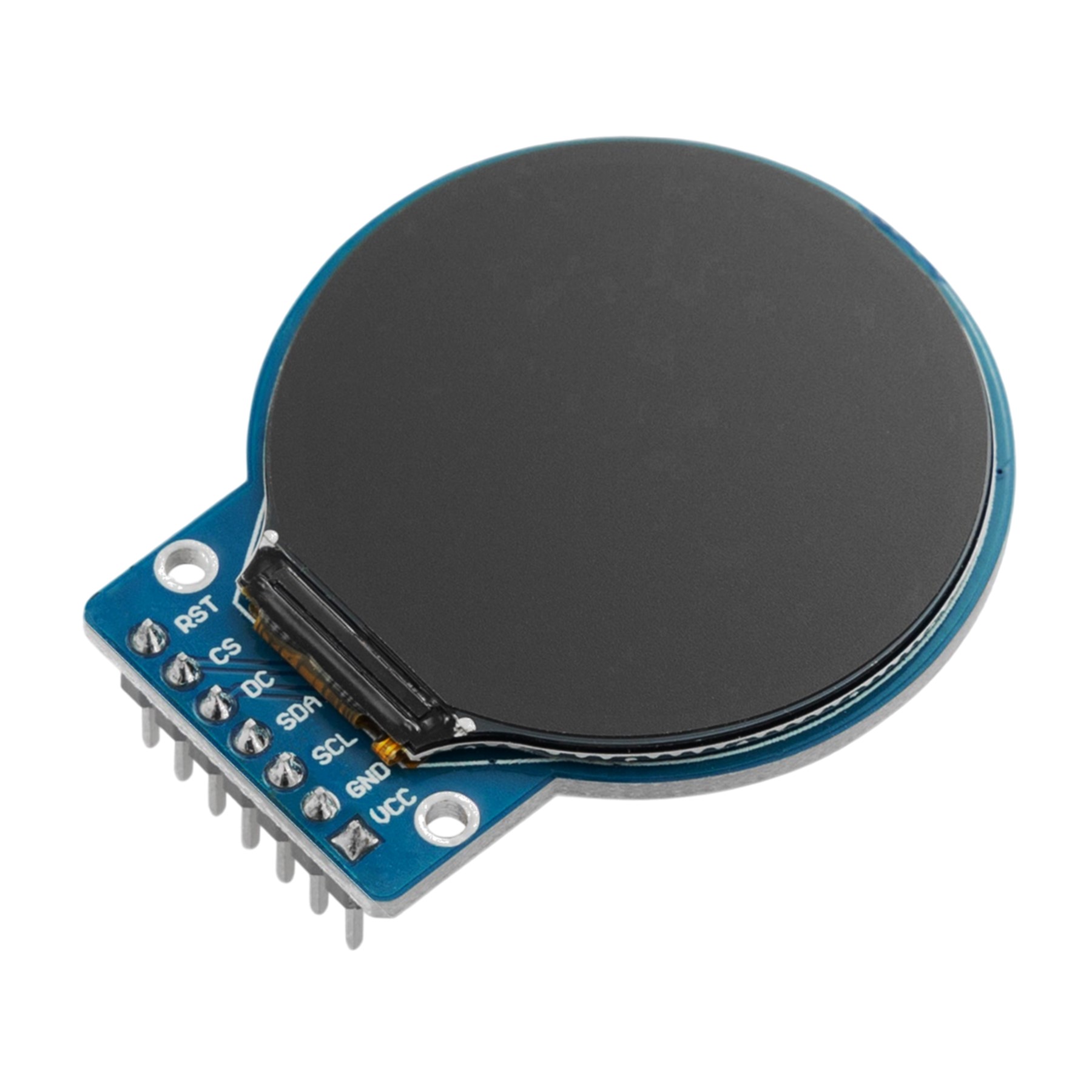DIYables LCD 2004 I2C 20x4 Display, Blue Backlight for Arduino, ESP32, ESP8266, Raspberry Pi
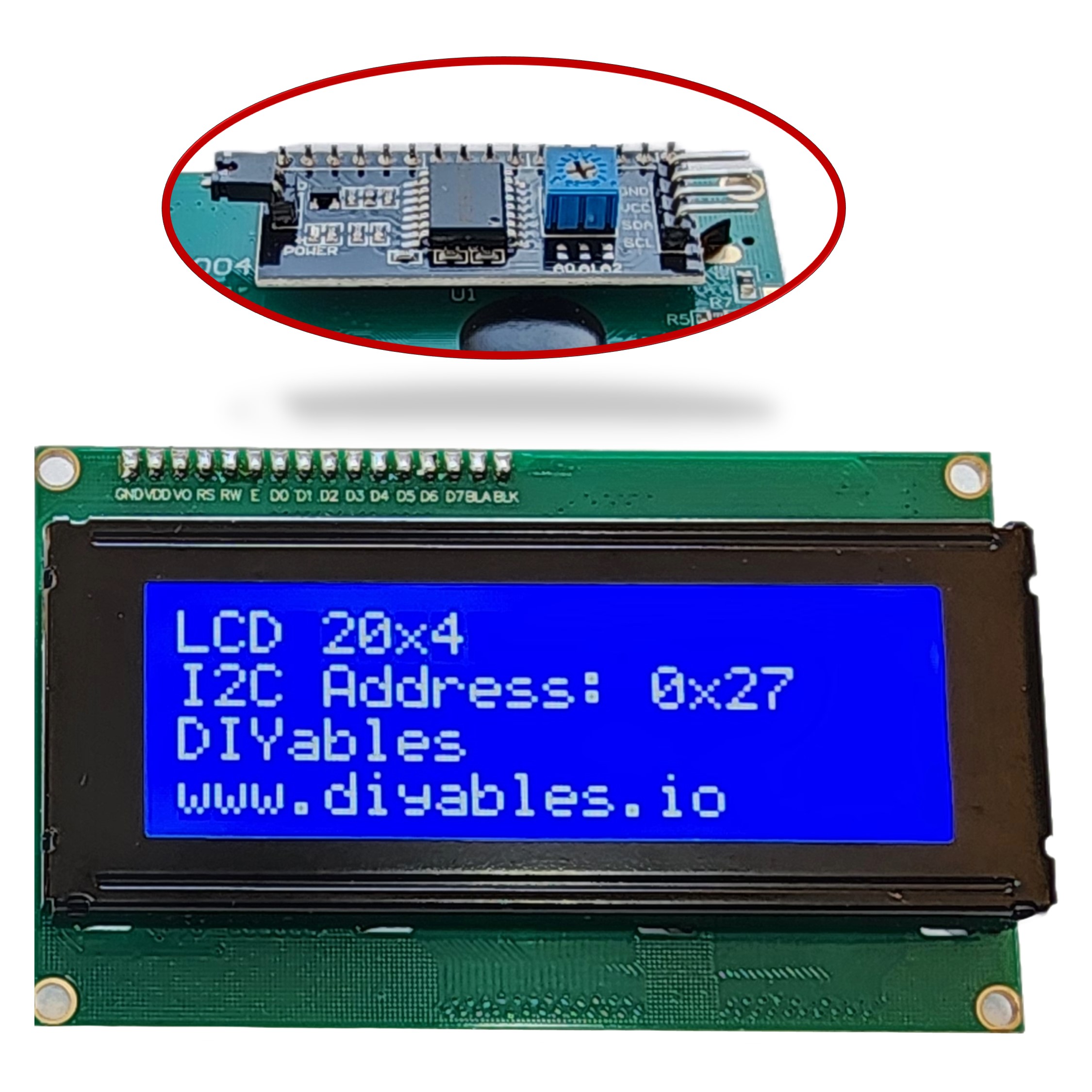 Click to zoom
Click to zoom

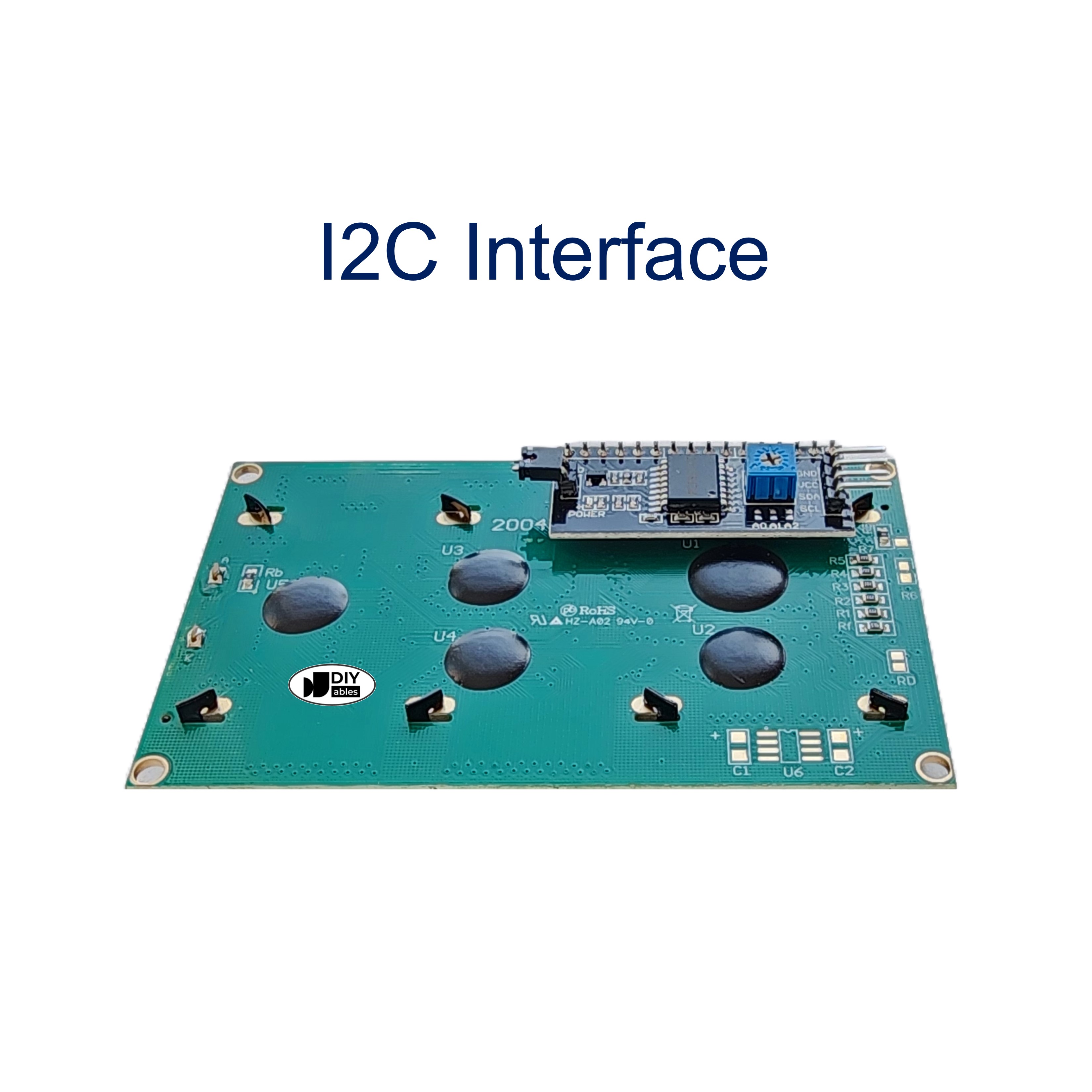
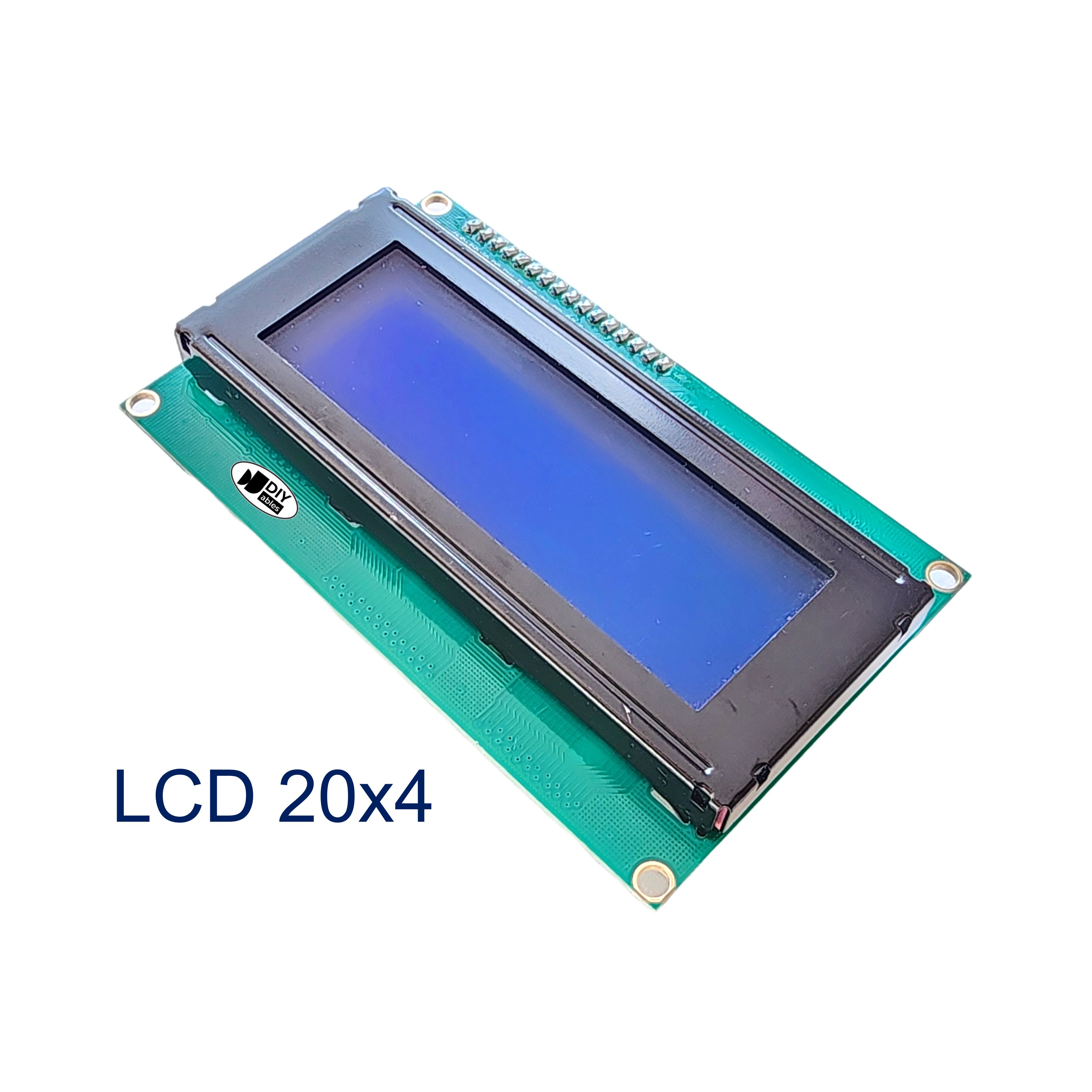
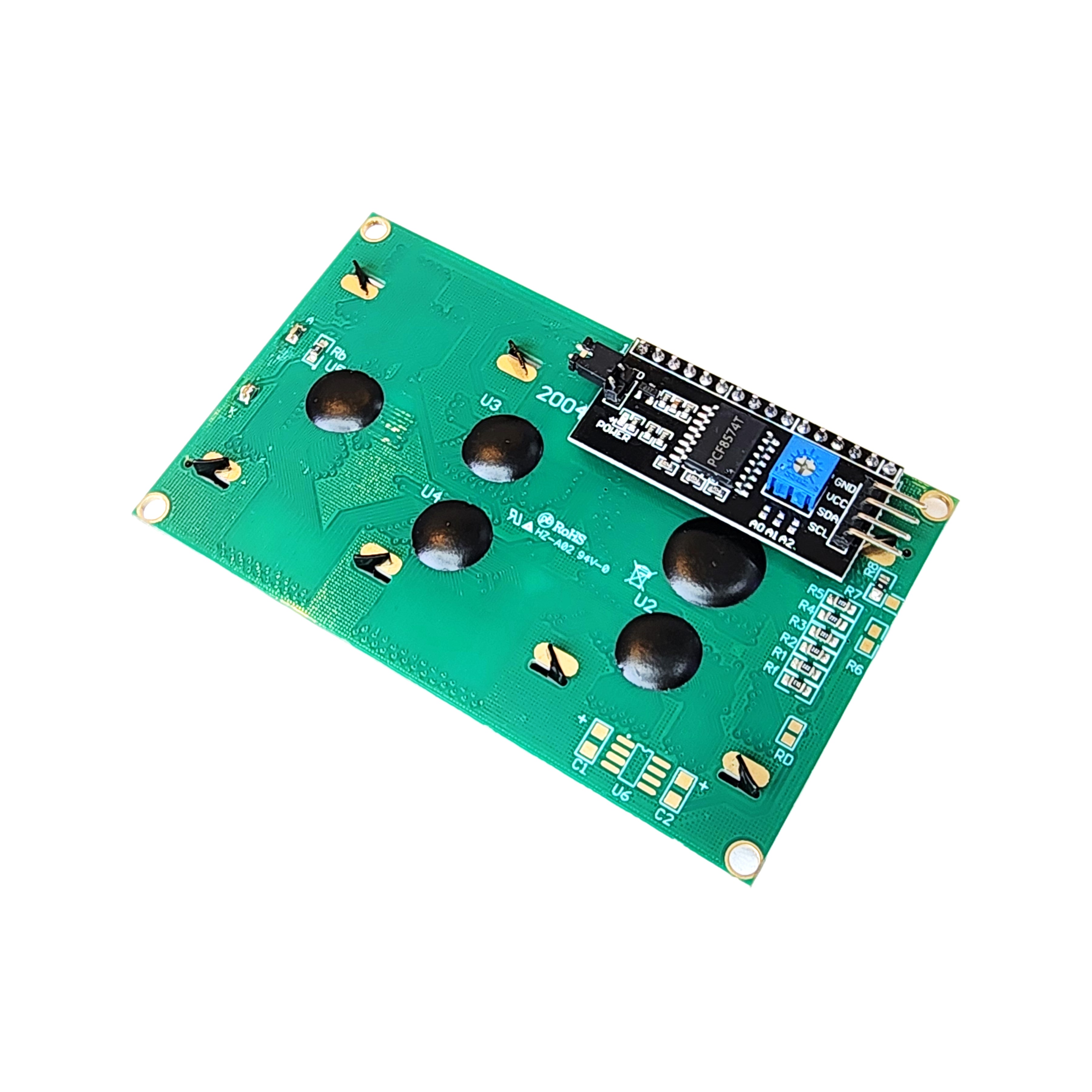
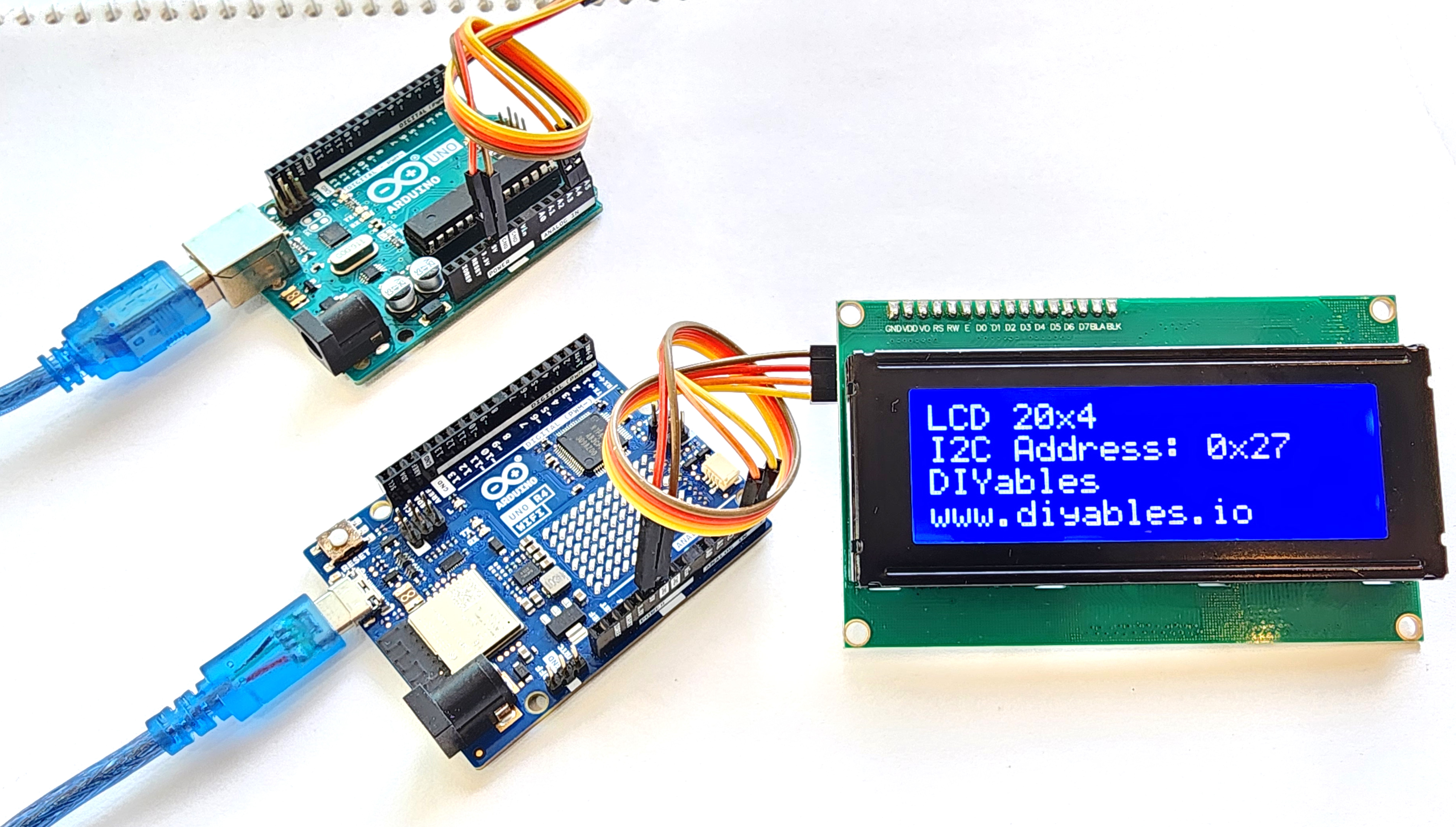
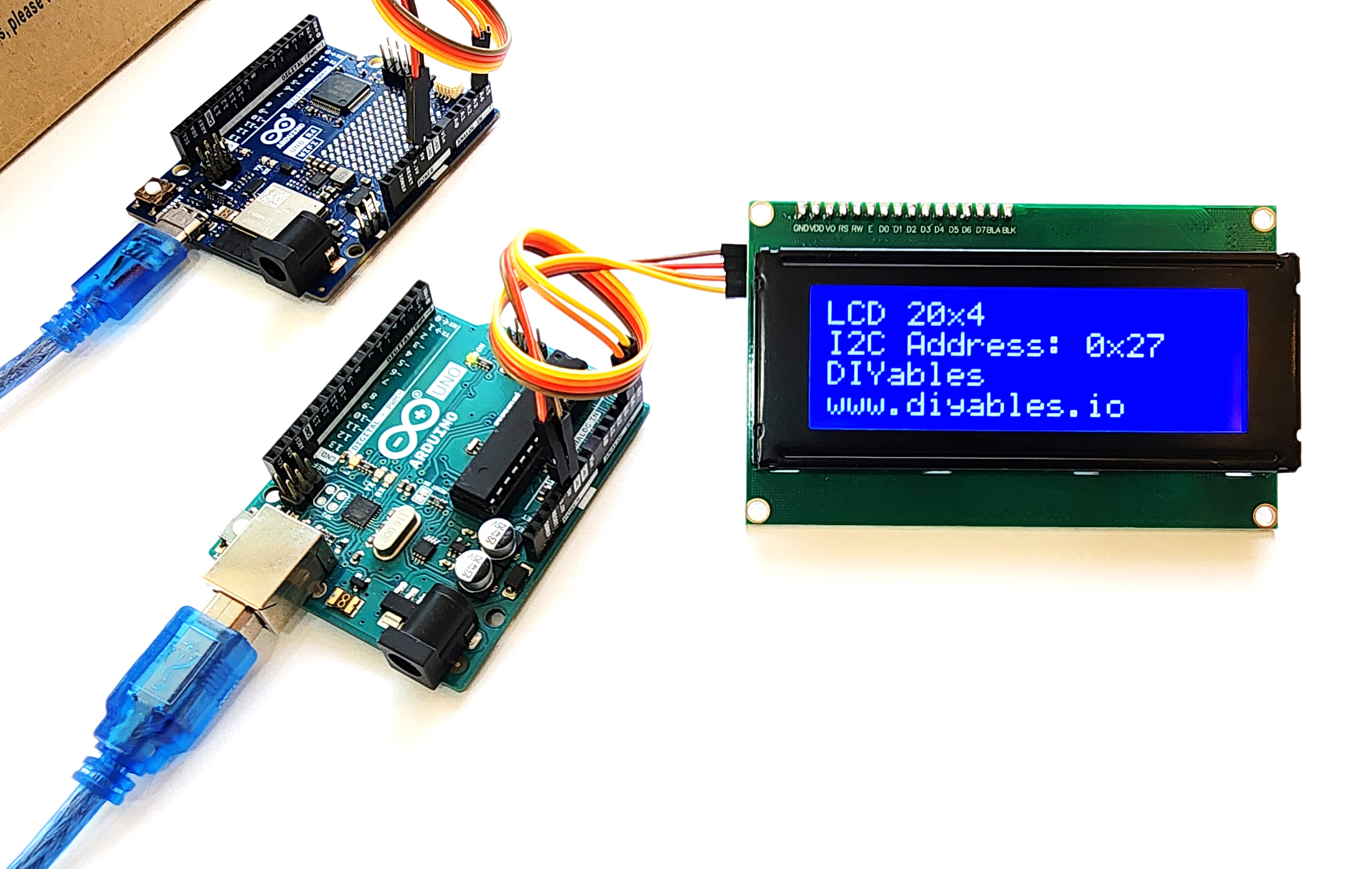
Quick Overview
The package includes a LCD 20x4 with I2C Interface for Arduino, ESP32, ESP8266, Raspberry Pi, or any 5V or 3.3V microcontroller..
Key Features
- Large 20x4 Character Display – Enhance your projects with a spacious LCD I2C 20x4 display, providing four lines of 20 characters each, ideal for displaying more data and information at once.
- Vibrant Blue Backlight with Adjustable Contrast – Features a bright blue backlight and a built-in potentiometer for easy contrast adjustment, ensuring optimal readability in various lighting conditions without the need for additional components.
- Easy I2C Interface – Simplify wiring and save GPIO pins with the I2C interface, making setup quick and hassle-free for your Arduino, ESP32, ESP8266, Raspberry Pi, and MicroPython projects.
- Wide Compatibility – Fully compatible with popular microcontrollers and single-board computers, including Arduino, ESP32, ESP8266, Raspberry Pi, and supports MicroPython, making it perfect for a variety of DIY electronics and coding projects.
- Includes Comprehensive Tutorials – Get started quickly with detailed tutorials that guide you through setup, programming, and integrating the display into your projects, making it suitable for both beginners and experienced makers.
Tutorials
Arduino Example Code
/*
* This code is created by DIYables.io
* This code is released in the public domain
* For more detail, visit https://diyables.io/products/lcd-2004-i2c-20x4-display-blue-backlight
*/
#include <LiquidCrystal_I2C.h>
LiquidCrystal_I2C lcd(0x27, 20, 4); // I2C address 0x27, 20 column and 4 rows
void setup() {
lcd.init(); // initialize the lcd
lcd.backlight();
lcd.setCursor(0, 0); // move cursor the first row
lcd.print("LCD 20x4"); // print message at the first row
lcd.setCursor(0, 1); // move cursor to the second row
lcd.print("I2C Address: 0x27"); // print message at the second row
lcd.setCursor(0, 2); // move cursor to the third row
lcd.print("DIYables"); // print message at the third row
lcd.setCursor(0, 3); // move cursor to the fourth row
lcd.print("www.diyables.io"); // print message the fourth row
}
void loop() {
}

